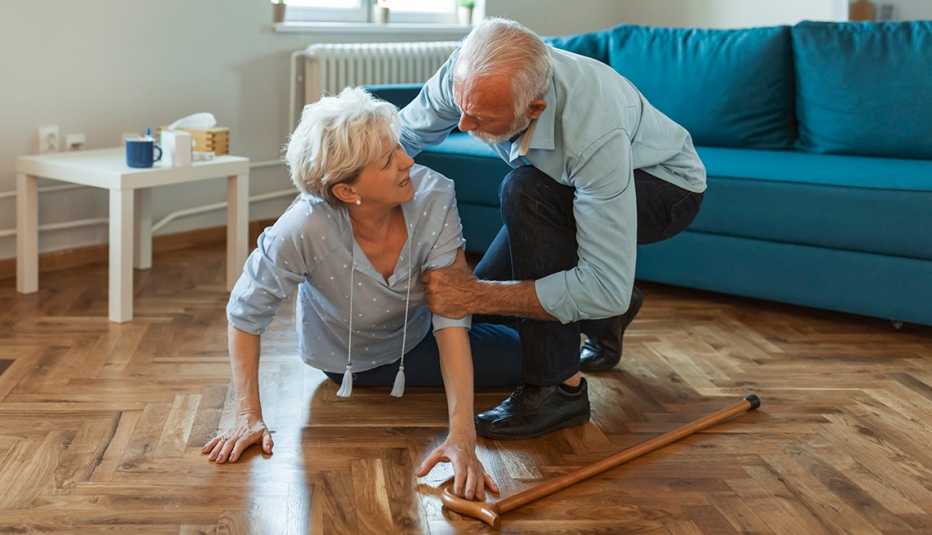Staying Fit


A stumble on uneven sidewalk or a trip over a shoelace may result in a scraped knee or a bruise for a small child. But for an older adult, falls can be serious, even deadly.
A new report from the Centers for Disease Control and Prevention (CDC) found a 7.6 percent increase in deadly falls for adults 65 and older from 2020 to 2021. The 38,742 fall-related deaths in 2021 (more than 100 per day) is in addition to the millions of major injuries older adults sustain each year from falls.


AARP Membership— $12 for your first year when you sign up for Automatic Renewal
Get instant access to members-only products and hundreds of discounts, a free second membership, and a subscription to AARP the Magazine.
When falls become serious
There are several reasons why falls become more dangerous as we get older. Bone and muscle loss, which becomes more common with age, increases the likelihood that a fall will result in a fracture, which can rob a person of his or her independence.
“For an older person who has some limitations in mobility, a fall can really make the difference in being able to walk again,” says Liron Sinvani, M.D., assistant professor at the Feinstein Institutes for Medical Research and the director of Geriatric Hospitalist Service at Northwell Health. Research shows hip fractures are to blame for nearly 30 percent of fall deaths among adults 65 and older.
Worsening eyesight and poor hearing can make it harder for older individuals to spot hazards. What’s more, studies show that older adults have slower reaction times and may not be able to catch themselves as quickly when they start to fall.
If your head hits before your hand, you could be left with a brain injury. Bleeding in the brain is especially a concern for the estimated 2 million Americans who take anticoagulants, commonly known as blood thinners. Almost half of fall deaths in the 65-plus population involve head injuries, according to a study published in the Journal of the American Geriatrics Society.
Recovery from serious injuries takes longer as you get older and can be especially challenging for those who are frail or are dealing with other medical conditions. Hospital stays can introduce infection risks, and medications to help manage pain can affect cognition.
Should you go to the doctor after you fall?
Yes. How soon you get there, though, depends on the severity of the fall.



































































More From AARP
14 Bathroom Updates for Now and Later as You Age in Place
Bathrooms present a high risk of falls and need special attentionHollywood Stunt Pros Teach You How to Fall Safely
Two stuntmen share their tricks for avoiding injury
The Safest Way for Older Adults to Get Up From a Fall
Use these tactics if you ever take a spill